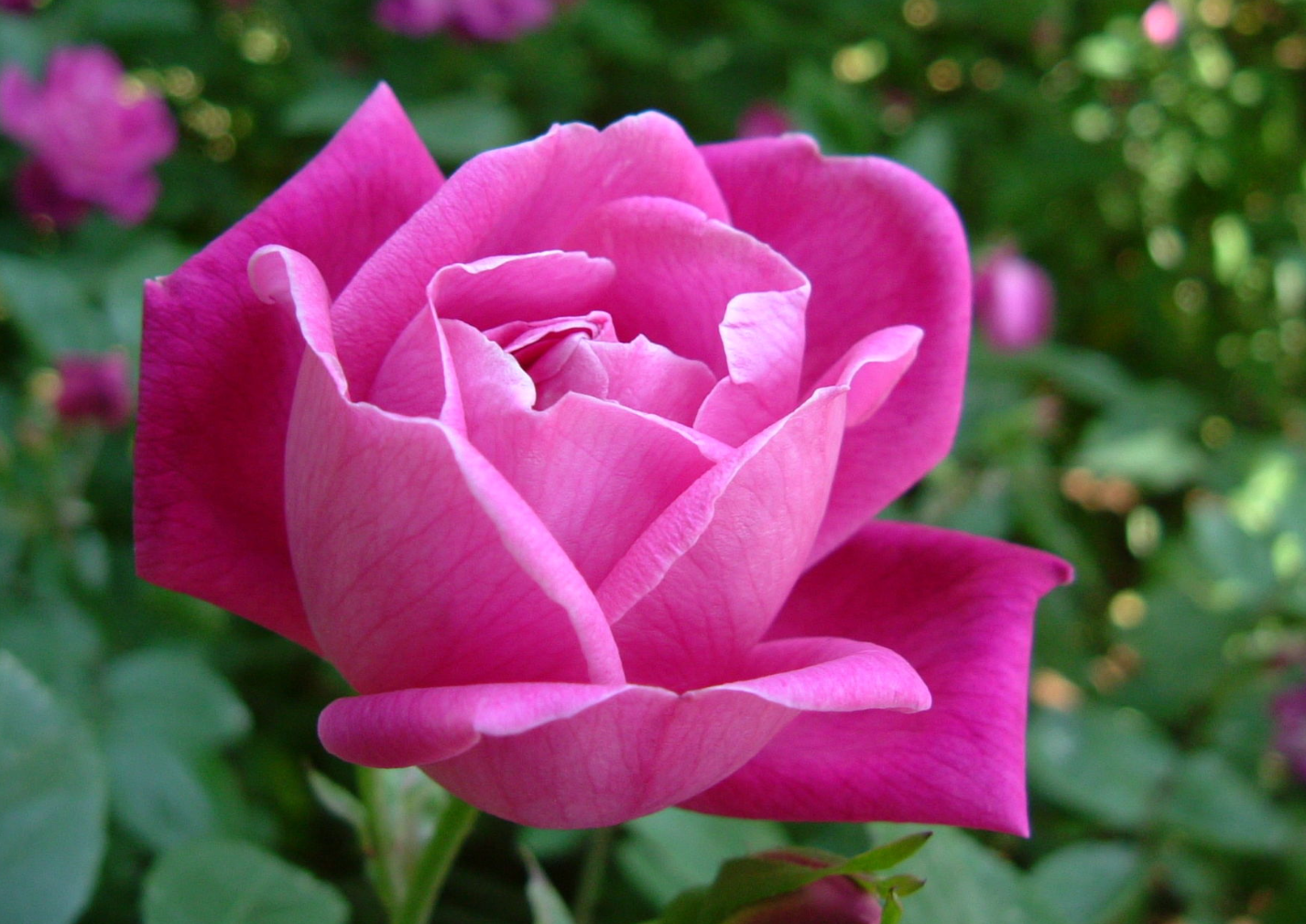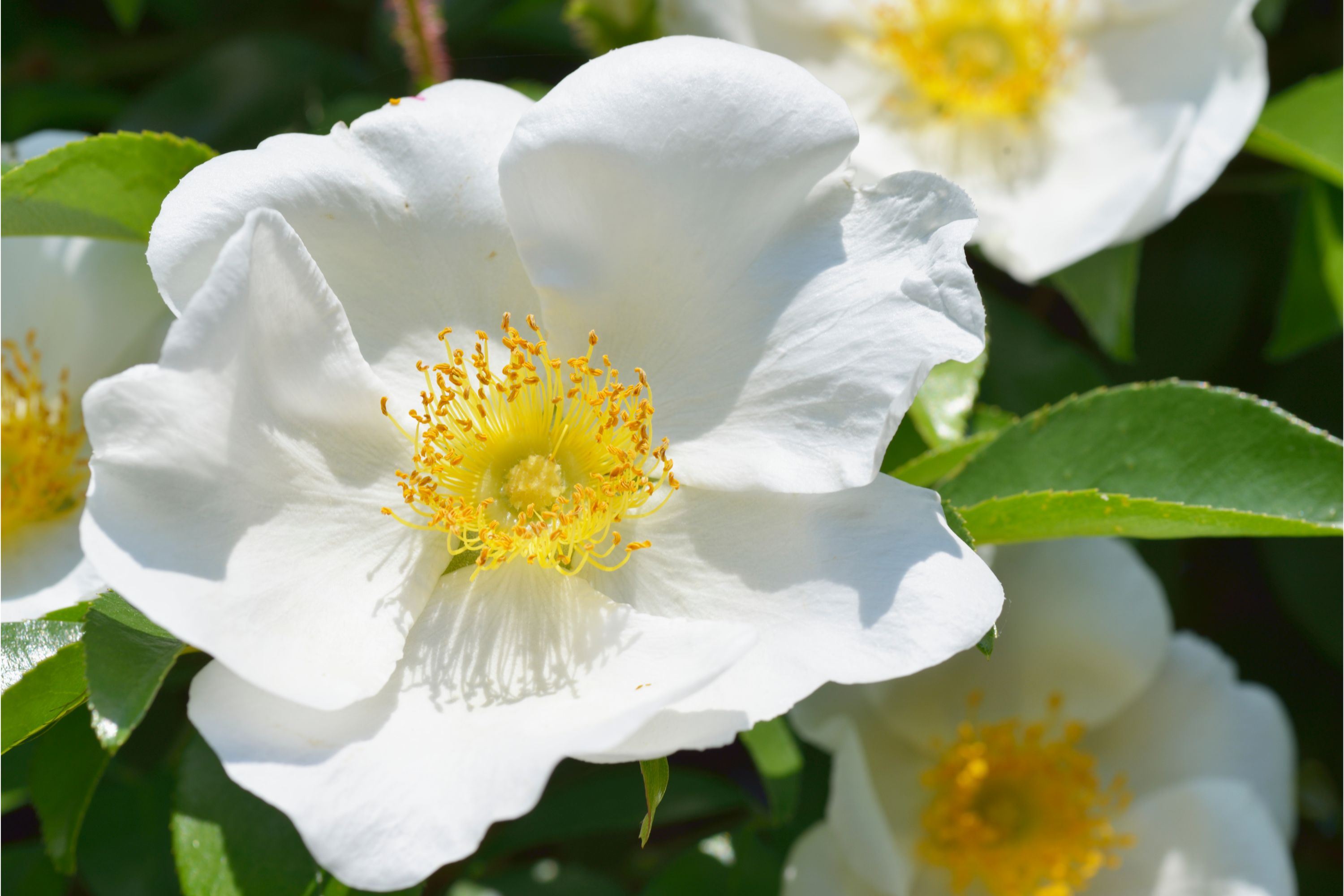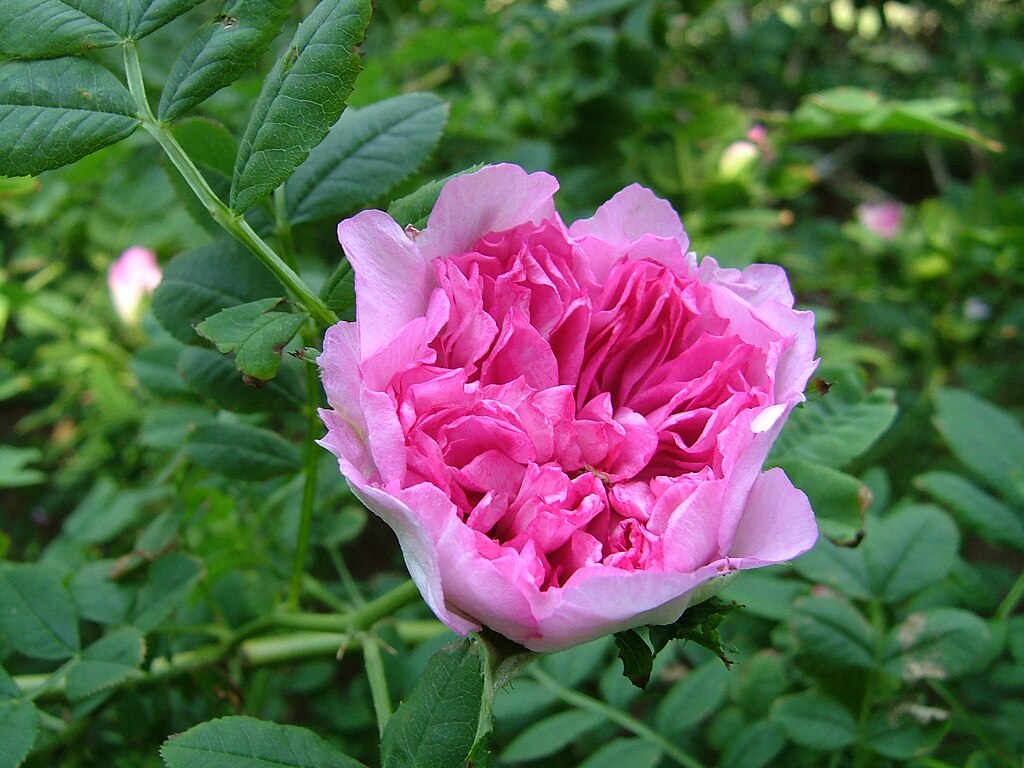Rose Species of the Genus Rosa
Simplified Rosa Evolutionary Context
Click on nodes with ▶/▼ to expand/collapse branches.
Key References:
- Potter, D., Eriksson, T., Evans, R. C., Oh, S., Smedmark, J. E., Morgan, D. R., ... & Campbell, C. S. (2007). Phylogeny and classification of Rosaceae. Plant Systematics and Evolution, 266, 5-43.
- Bruneau, A., Starr, J. R., & Joly, S. (2007). Phylogenetic relationships in the genus Rosa: new evidence from G3pdh sequence data. Systematic Botany, 32(2), 366-378.
Rosa rugosa - Rose
Common Names
- Chinese: 玫瑰
- English: Rugosa Rose, Japanese Rose
- Scientific: Rosa rugosa
Taxonomy
Eukaryota; Viridiplantae; Streptophyta; Streptophytina; Embryophyta; Tracheophyta; Euphyllophyta; Spermatophyta; Magnoliopsida; Mesangiospermae; eudicotyledons; Gunneridae; Pentapetalae; rosids; fabids; Rosales; Rosaceae; Rosoideae; Roseae; Rosa
Genome References
Dan Liu, et al. Telomere-to-telomere, gap-free assembly of the Rosa rugosa reference genome.Horticultural Plant Journal. 2024, 13(1): giad110.

Rosa rugosa plant
Description
Rosa rugosa is a suckering shrub which develops new plants from the roots and forms dense thickets 1–1.50 m tall with stems densely covered in numerous short, straight prickles 3–10 mm long. The leaves are 8–15 cm long, pinnate with 5–9 leaflets, most often 7, each leaflet 3–4 cm long, with a distinctly corrugated (rugose, hence the species' name) surface. The leaf is elliptical in shape with a rounded base or broadly cuneate with a leather feel, dark green top. The back of the leaf is composed of a green-grey colour with hair along the veins. The leaf margin is composed of teeth along the edges and is crenate-serrate.
The flower has five petals that are usually 6–9 cm in width. The flower is composed of 200–250 stamens per flow and vary in style. The flowers are pleasantly scented; range in color from dark pink to white (on R. rugosa f. alba (Ware) Rehder), 6–9 cm across, with somewhat wrinkled petals; flowering occurs in spring.
Rosa chinensis - Chinese Rose
Common Names
- Chinese: 月季
- English: China Rose, Monthly Rose
- Scientific: Rosa chinensis
Taxonomy
Eukaryota; Viridiplantae; Streptophyta; Streptophytina; Embryophyta; Tracheophyta; Euphyllophyta; Spermatophyta; Magnoliopsida; Mesangiospermae; eudicotyledons; Gunneridae; Pentapetalae; rosids; fabids; Rosales; Rosaceae; Rosoideae; Roseae; Rosa
Genome References
Hibrand Saint-Oyant L, Ruttink T, Hamama L, et al. A high-quality genome sequence of Rosa chinensis to elucidate ornamental traits.Nat Plants. 2018;4(7):473-484.

Rosa chinensis plant
Description
It is a shrub that reaches 1–2 m and grows in hedges or forms thickets. The leaves are pinnate, have 3–5 leaflets, each 2.5–6 cm long and 1–3 cm broad. In the wild species (sometimes listed as Rosa chinensis var. spontanea), the flowers have five pink to red petals. The fruit is a red hip one to two cm in diameter. The strong branches have a smooth purplish-brown bark, and there may be many to no curved, stocky, flat spines.
The alternately-arranged leaves, 12 to 27 cm long, are pinnately divided. The petiole and the rachis are sparsely spiny, with glandular hairs. The leaf blades usually have three or five or, rarely, seven leaflets, 2.5 to 6 centimeters in length, with a width of 1 to 3 centimeters, ovate or ovate-oblong with a weak-rounded or broad and wedge-shaped base, a more-or-less long, tapered apex and sharply toothed edge. The upper surface is shiny and dark green.
Rosa chinensis is particularly significant as the ancestor of many modern roses. It was introduced to Europe in the late 18th century and revolutionized rose breeding by introducing the trait of repeat flowering throughout the growing season.
Rosa laevigata - Cherokee Rose
Common Names
- Chinese: 金樱子
- English: Cherokee Rose
- Scientific: Rosa laevigata
Taxonomy
Eukaryota; Viridiplantae; Streptophyta; Streptophytina; Embryophyta; Tracheophyta; Euphyllophyta; Spermatophyta; Magnoliopsida; Mesangiospermae; eudicotyledons; Gunneridae; Pentapetalae; rosids; fabids; Rosales; Rosaceae; Rosoideae; Roseae; Rosa
Genome References
Zhang R, Wnag M, Zhang G, et al. Chromosomal level genome assembly of medicinal plant Rosa laevigata. Sci Data. 2025;12(1):716. Published 2025 Apr 30.

Rosa laevigata
Description
It is an evergreen climbing shrub, scrambling over other shrubs and small trees to heights of up to 5–10 metres (16–33 ft). The leaves are 3–10 centimetres (1.2–3.9 in) long, with usually three leaflets, sometimes five leaflets, bright glossy green and glabrous. The flowers are 6–10 centimetres (2.4–3.9 in) diameter, fragrant, with pure white petals and yellow stamens, and are followed by bright red and bristly hips 2–4 centimetres (0.79–1.57 in) diameter. The flower stem is also very bristly.
Rosa roxburghii - Sweet Chestnut Rose
Common Names
- Chinese: 缫丝花
- English: Chestnut Rose, Burr Rose
- Scientific: Rosa roxburghii
Taxonomy
Eukaryota; Viridiplantae; Streptophyta; Streptophytina; Embryophyta; Tracheophyta; Euphyllophyta; Spermatophyta; Magnoliopsida; Mesangiospermae; eudicotyledons; Gunneridae; Pentapetalae; rosids; fabids; Rosales; Rosaceae; Rosoideae; Roseae; Rosa
Genome References
Yang J, Zhang J, Yan H, et al. The chromosome-level genome and functional database accelerate research about biosynthesis of secondary metabolites in Rosa roxburghii. BMC Plant Biol. 2024;24(1):410. Published 2024 May 17.

Rosa roxburghii
Description
Rosa roxburghii, known as burr rose, chestnut rose, chinquapin rose, or cili, is a flowering plant in the Rosaceae family, native to the eastern Himalayas, Tibet, and central and southern China. It grows in thickets, mountain forests, slopes, and along streams at 500–1,400 m above sea level. This diffuse shrub can reach 8 m but is typically shorter and is commercially available. In China, it's cultivated on 170,000 ha, mainly in Guizhou, for its vitamin C-rich hips. Named after William Roxburgh, a Scottish botanist and director of the Calcutta Botanical Garden. Three forms exist: Rosa roxburghii f. roxburghii with double or semi-double reddish or pink flowers, 5–6 cm in diameter; Rosa roxburghii f. normalis with single pink flowers, 4–6 cm in diameter; and Rosa roxburghii f. hirtula with single pale pink or lilac-pink flowers from Japan.